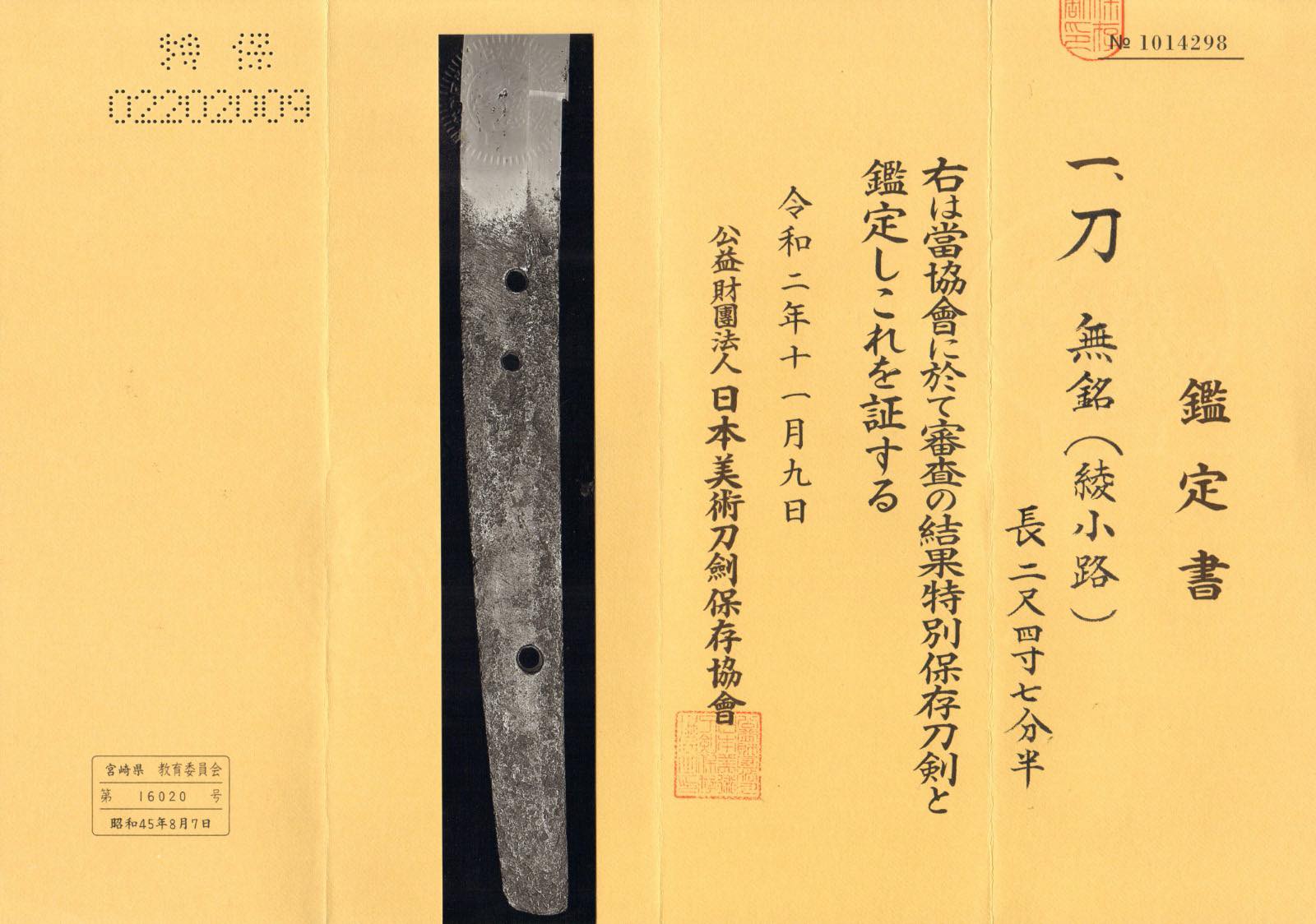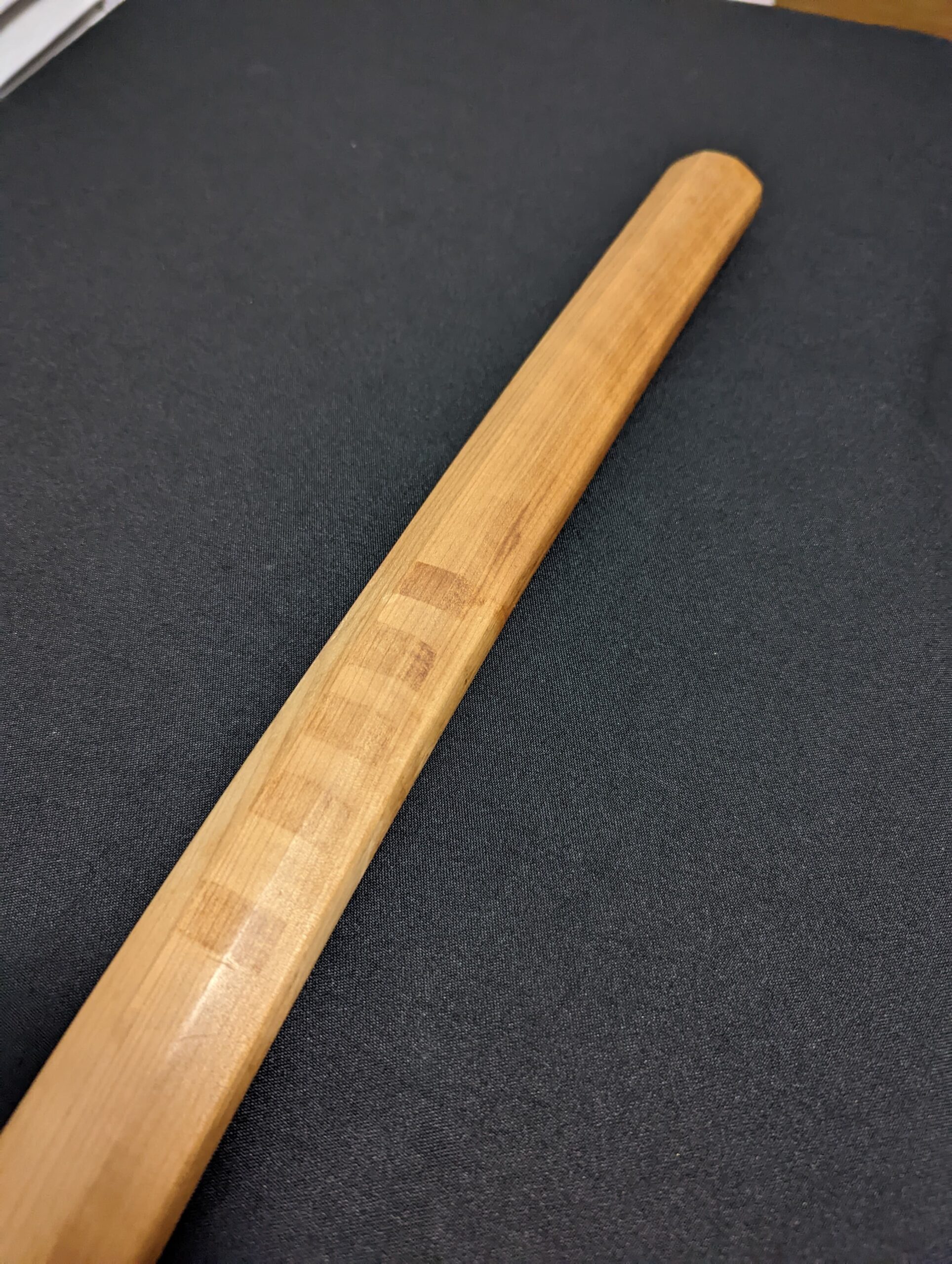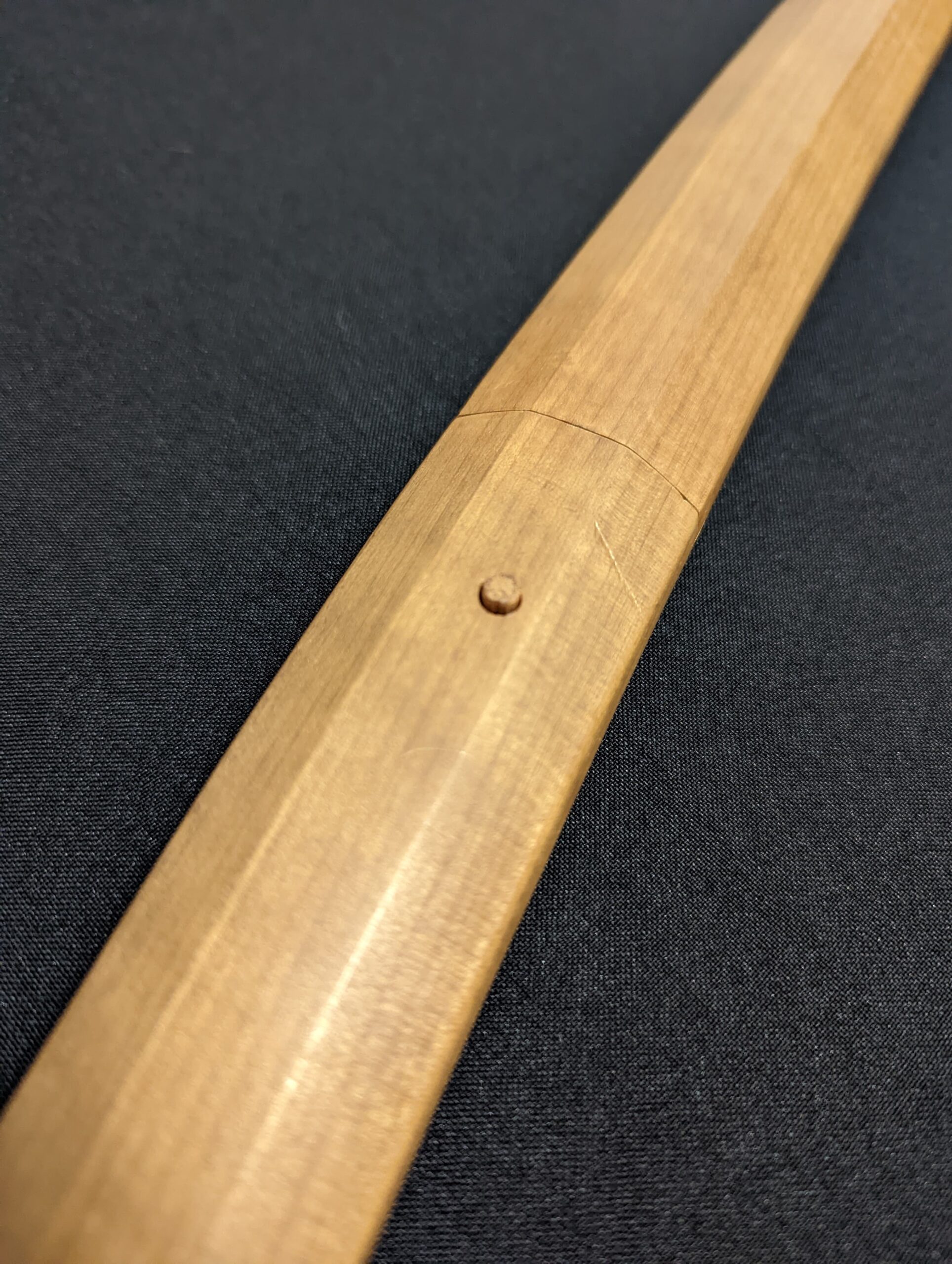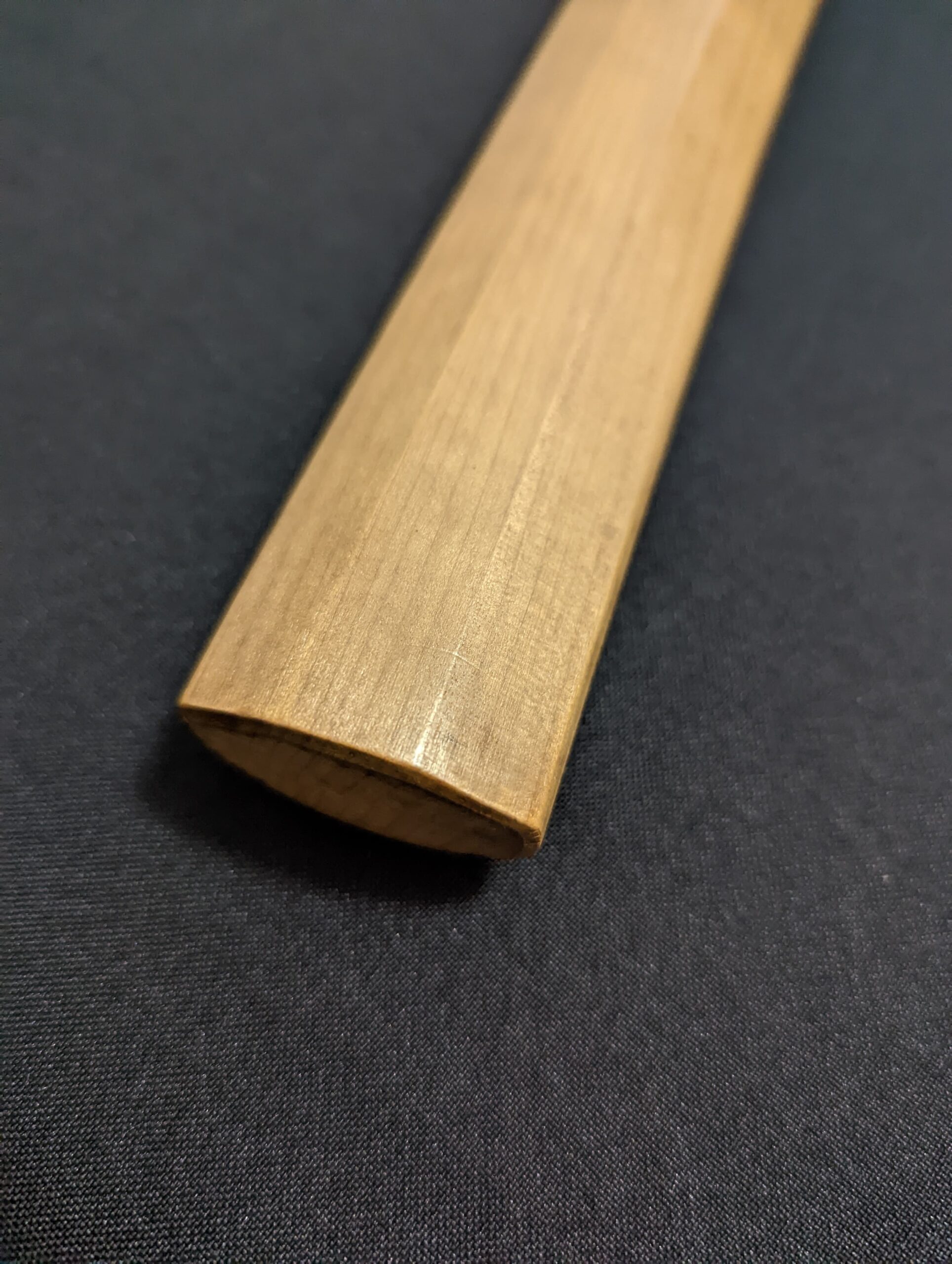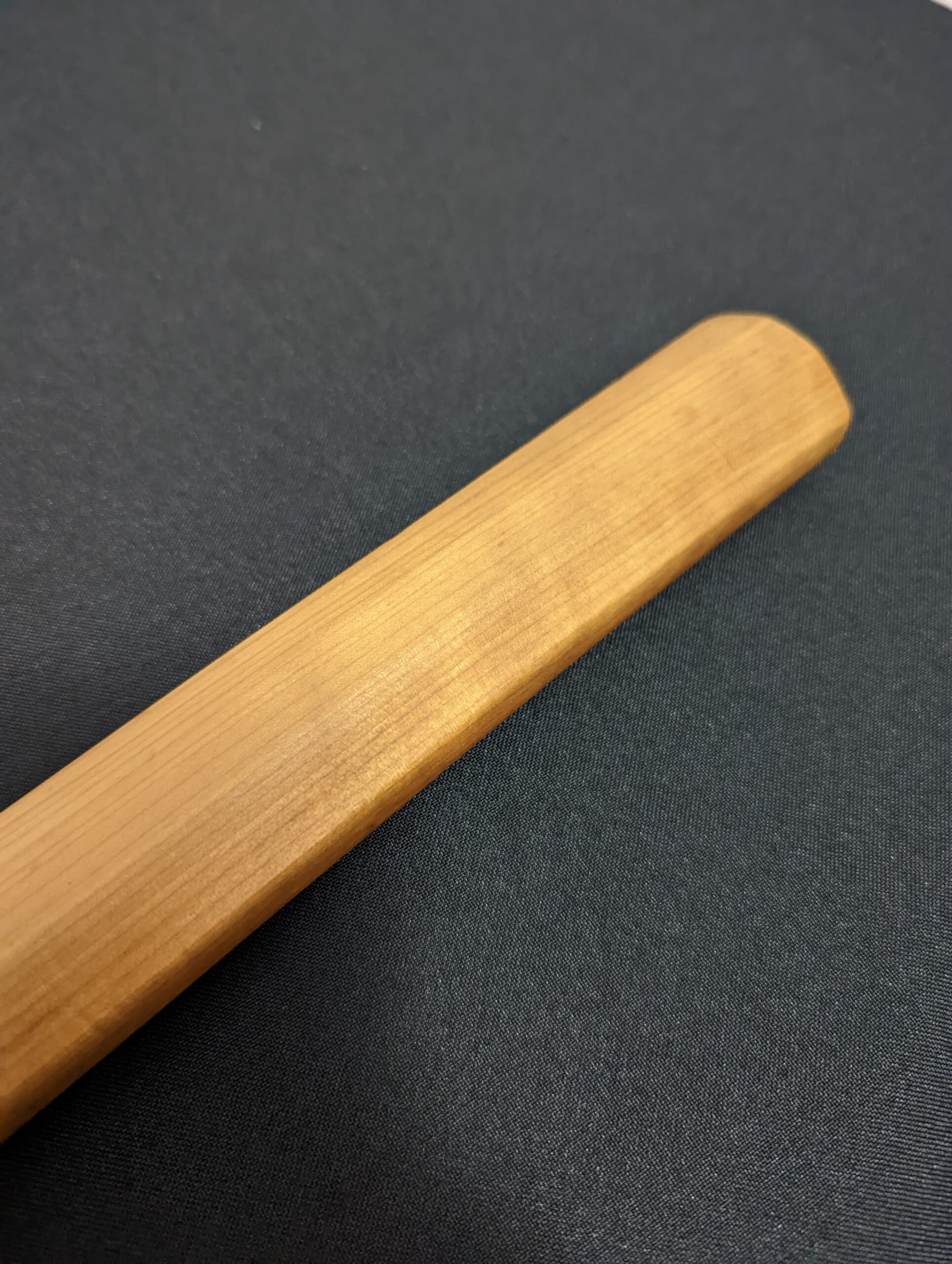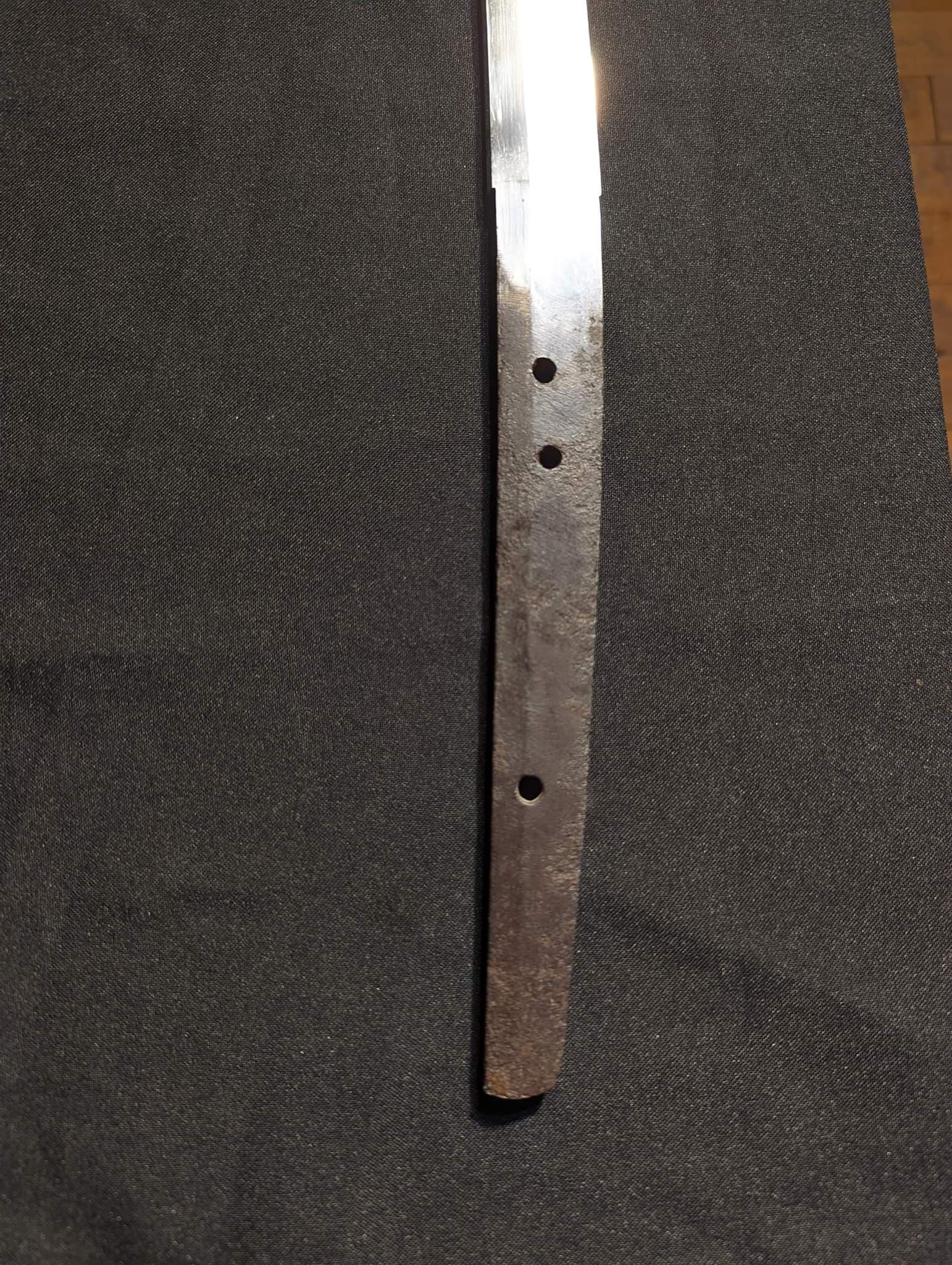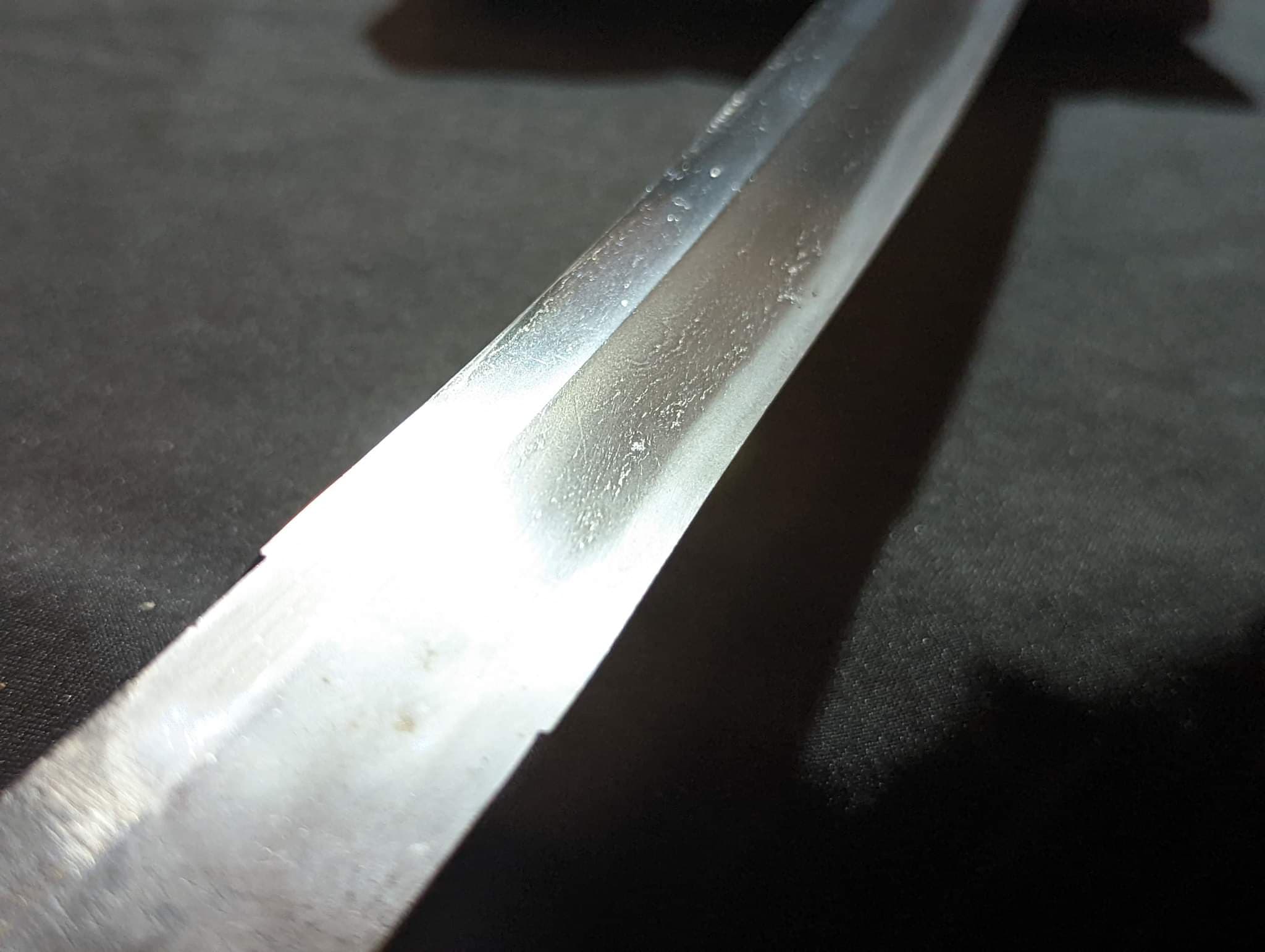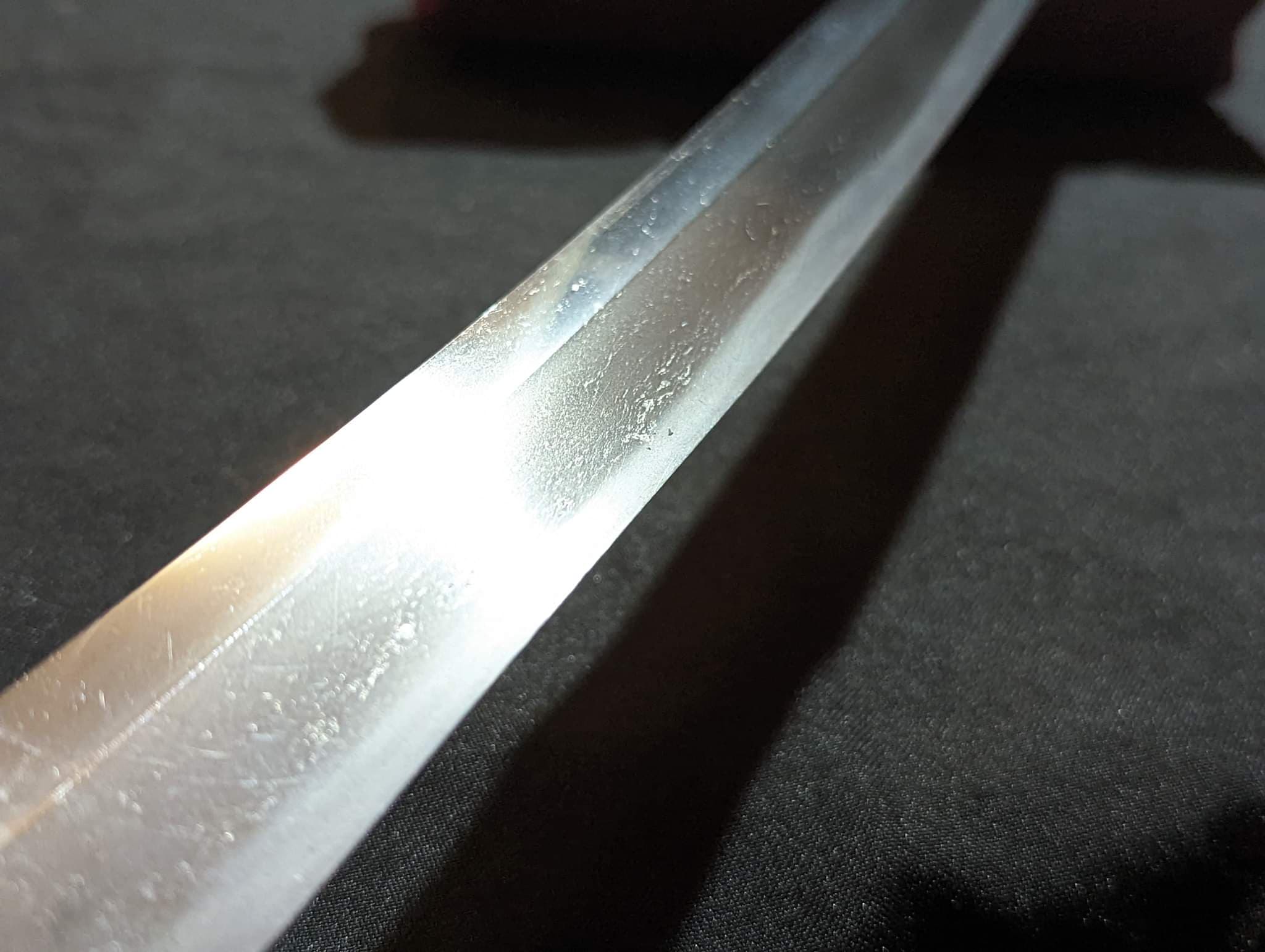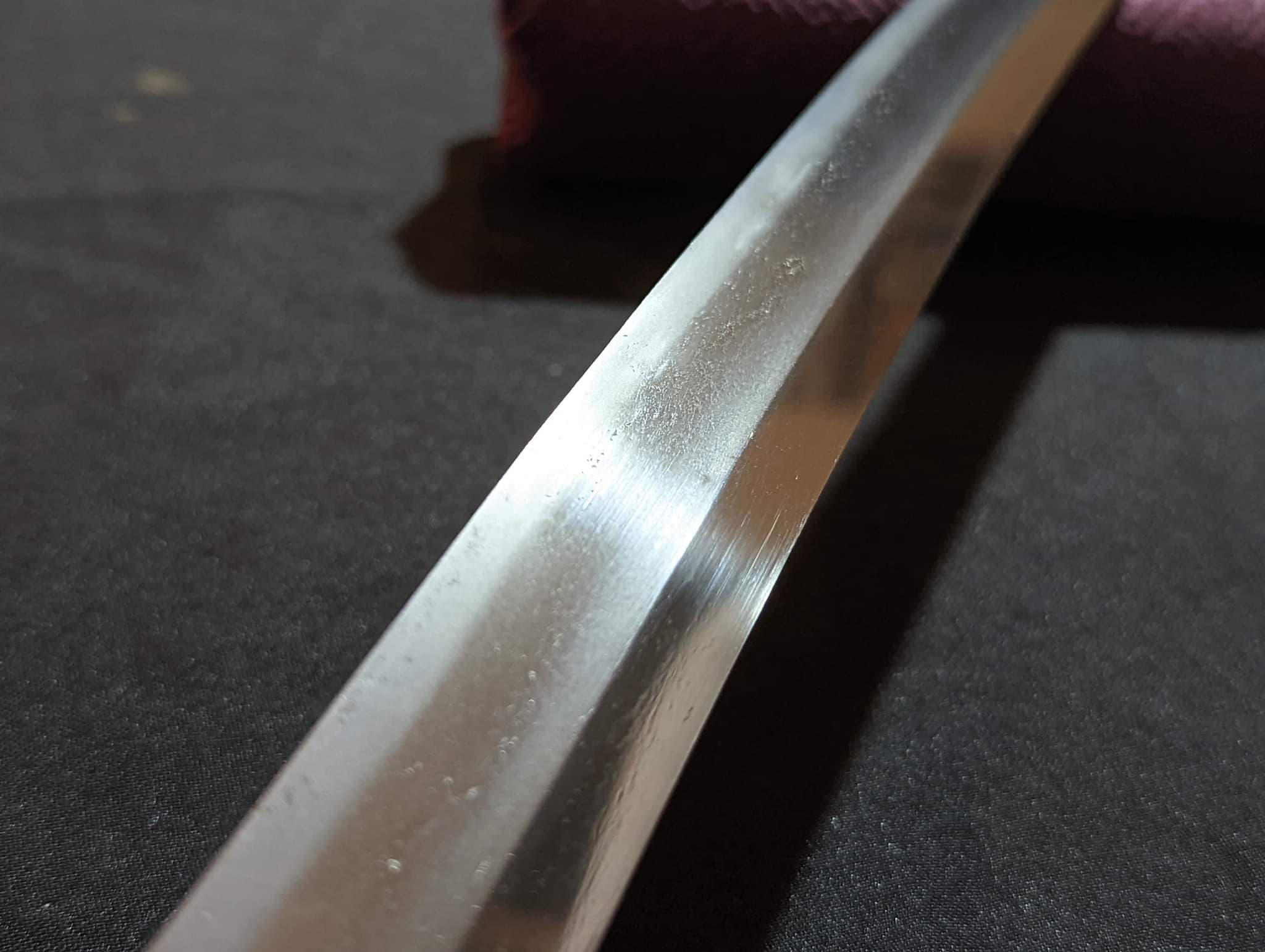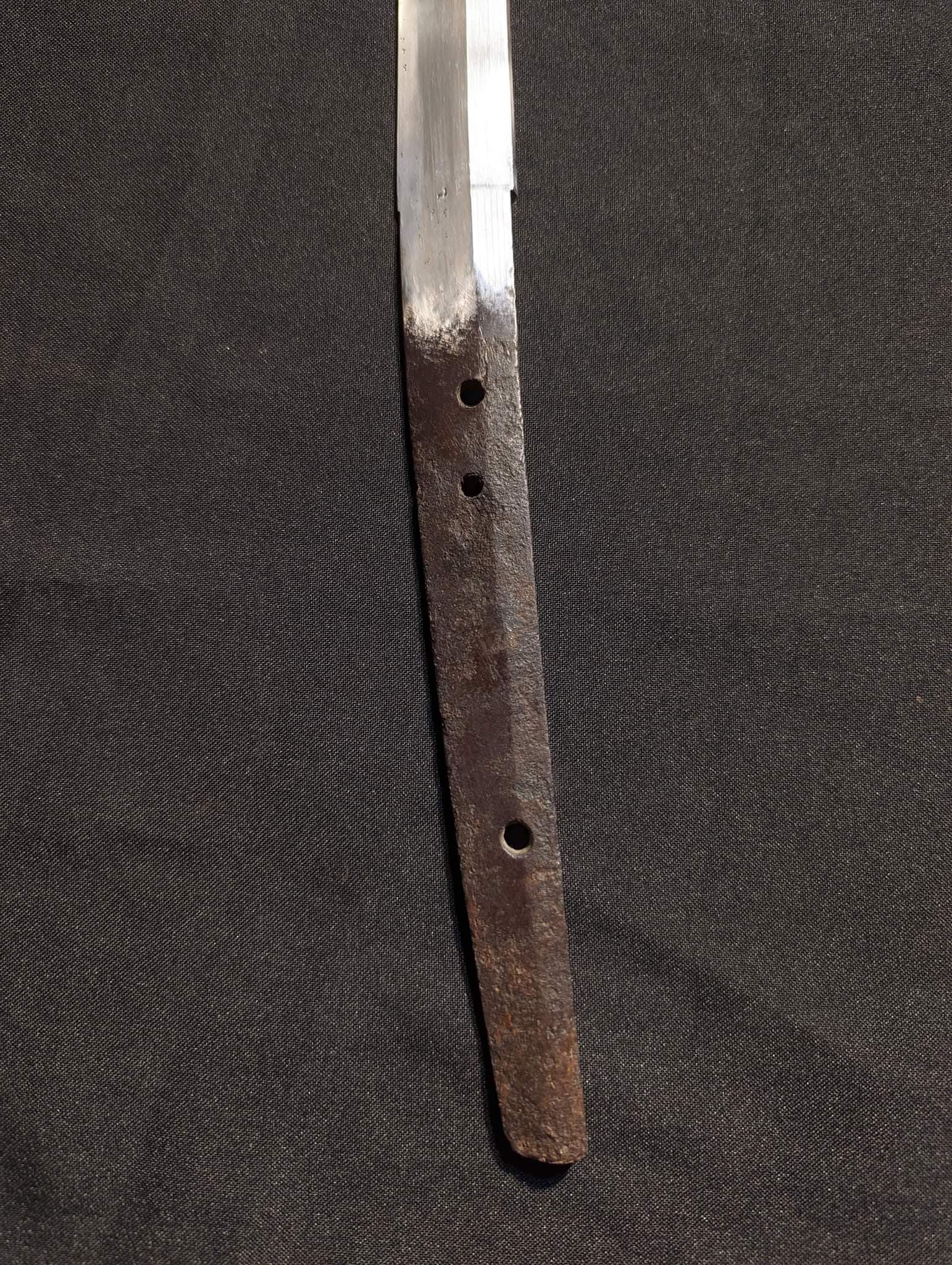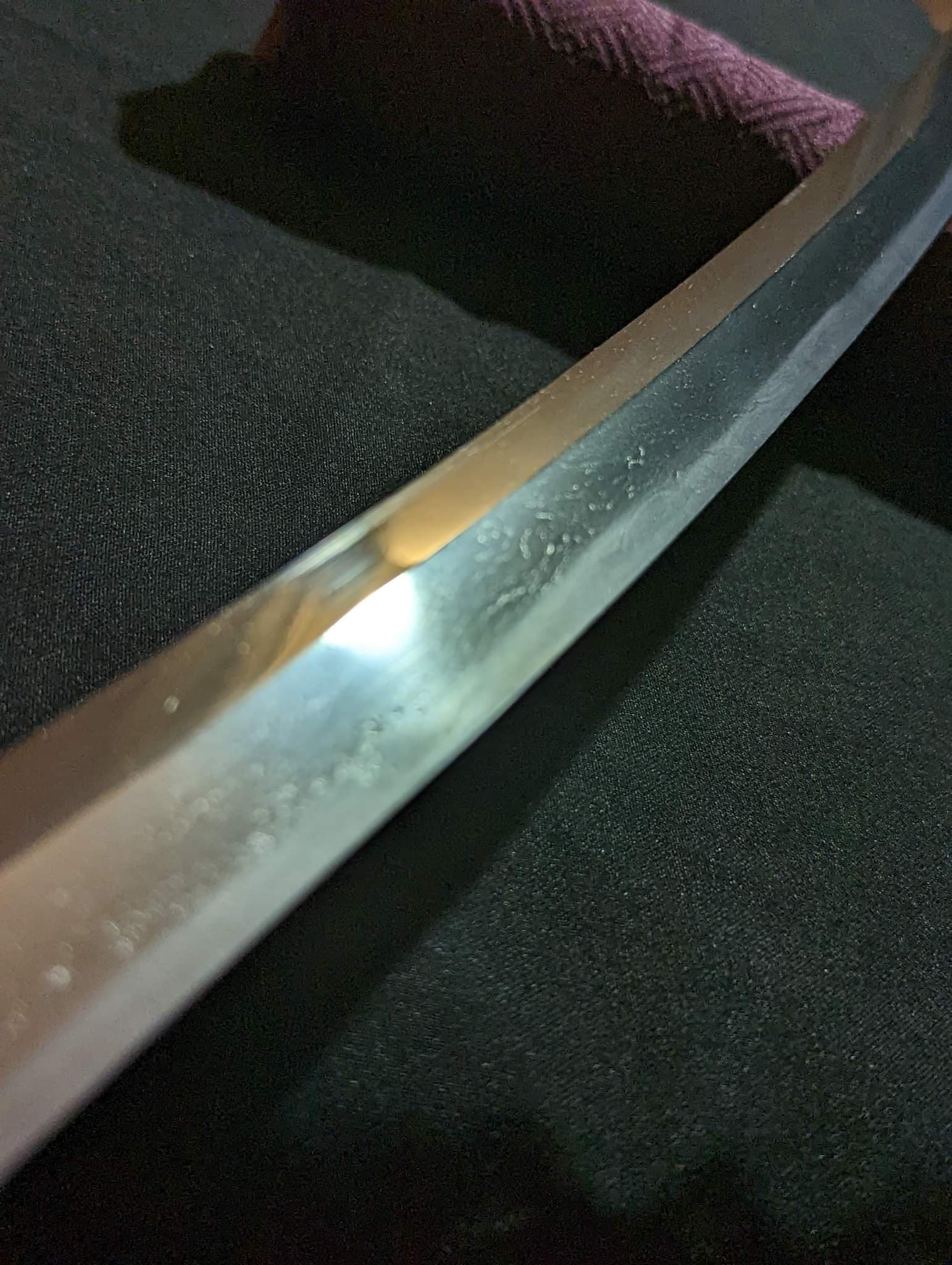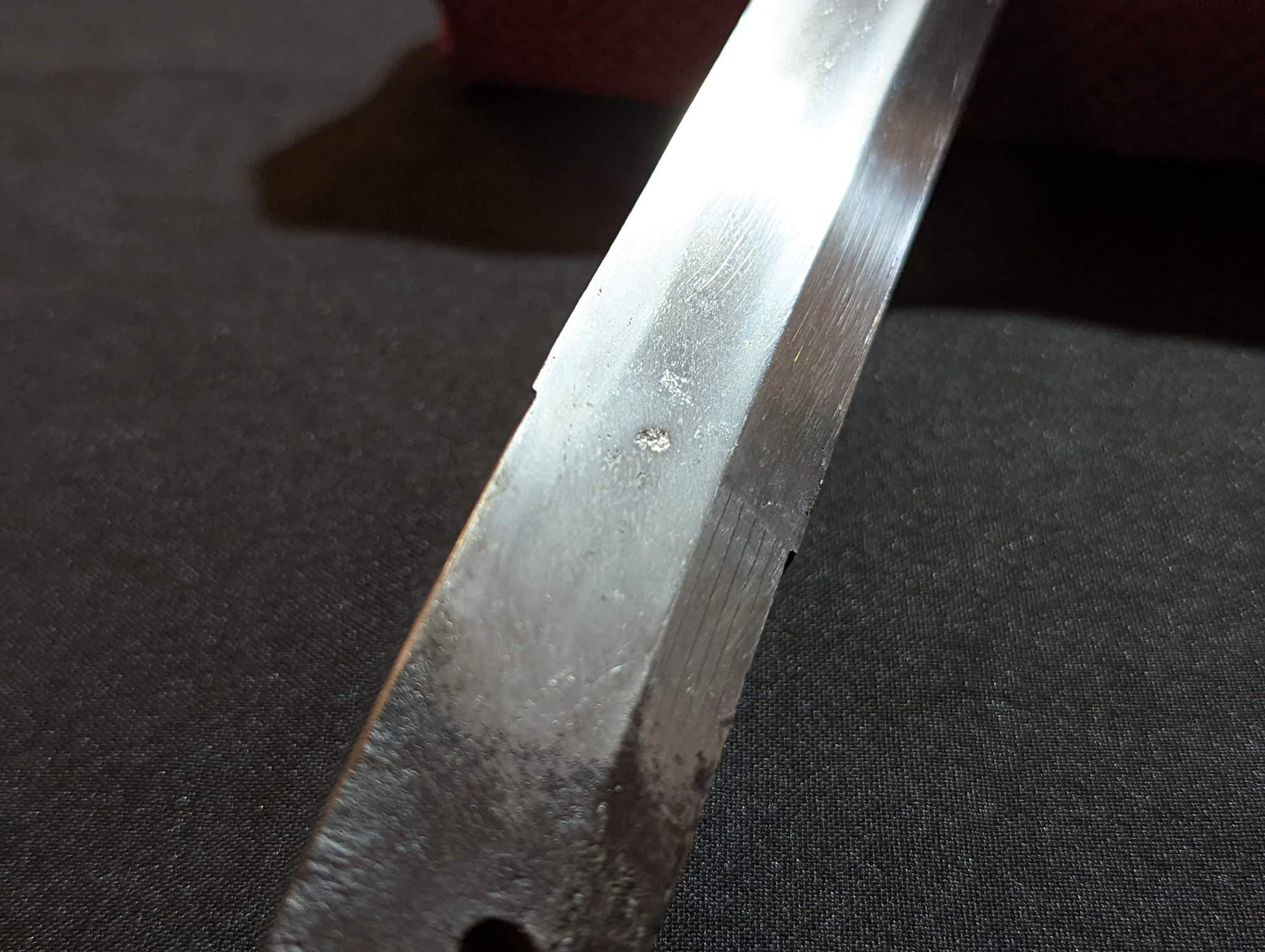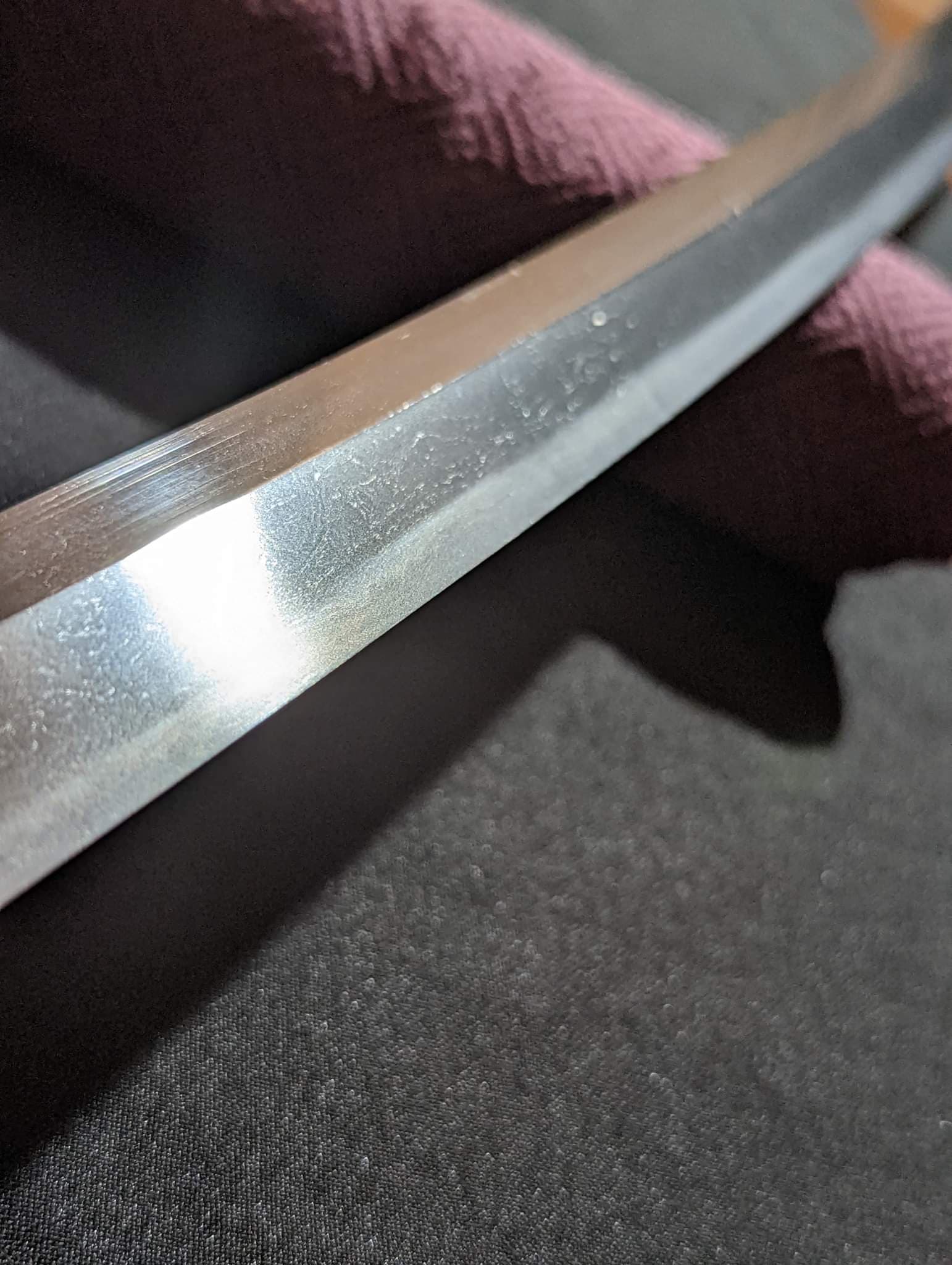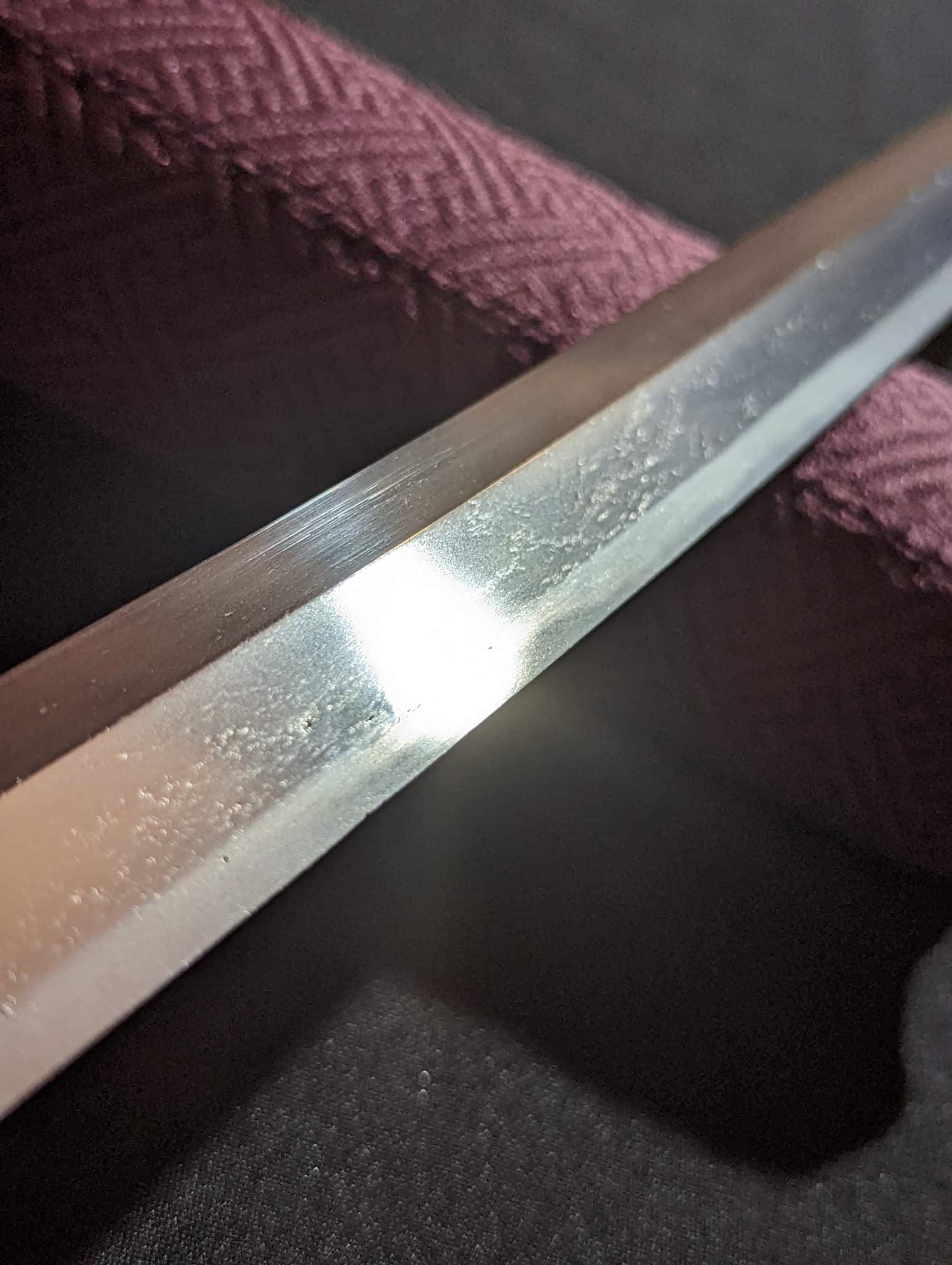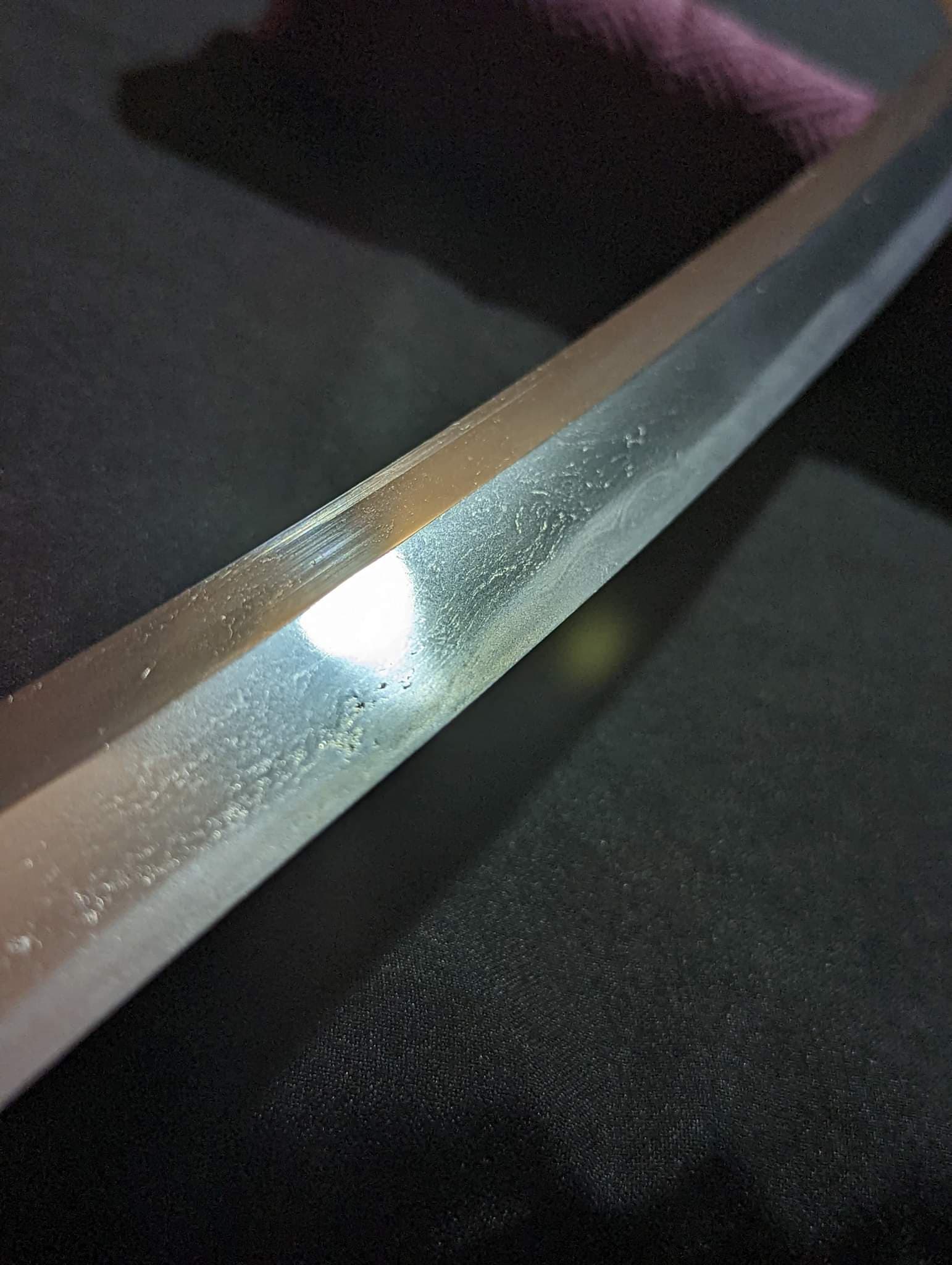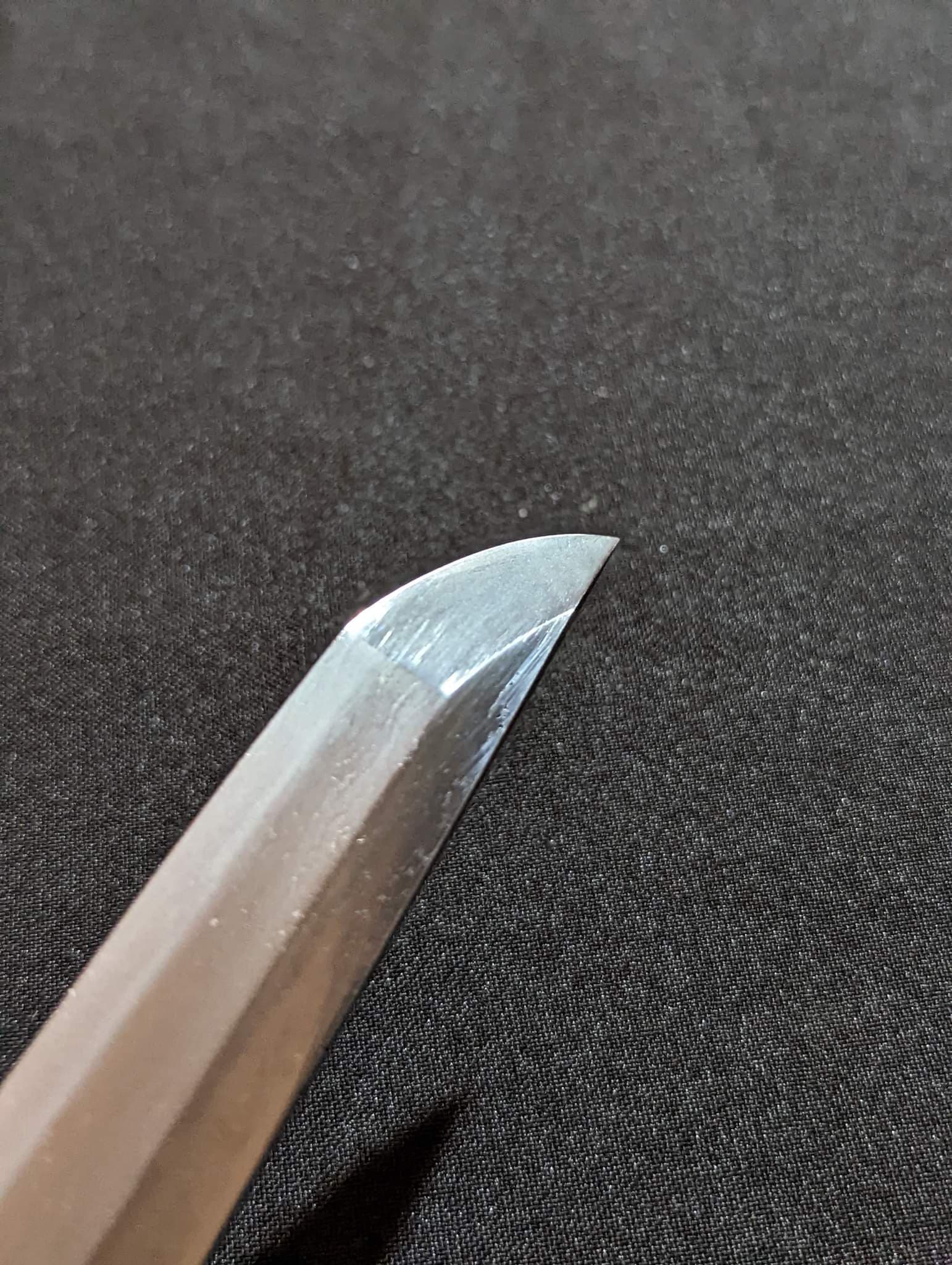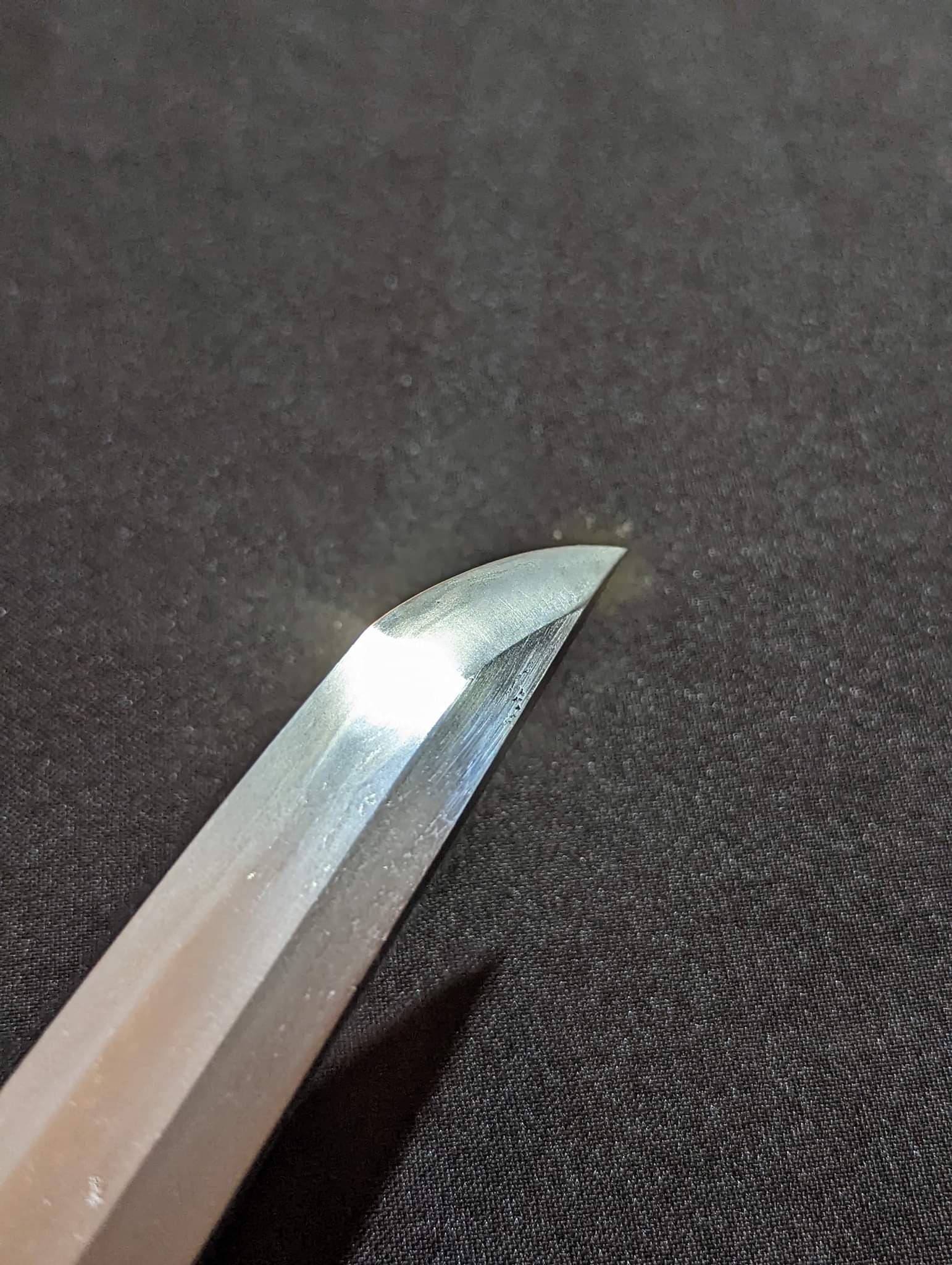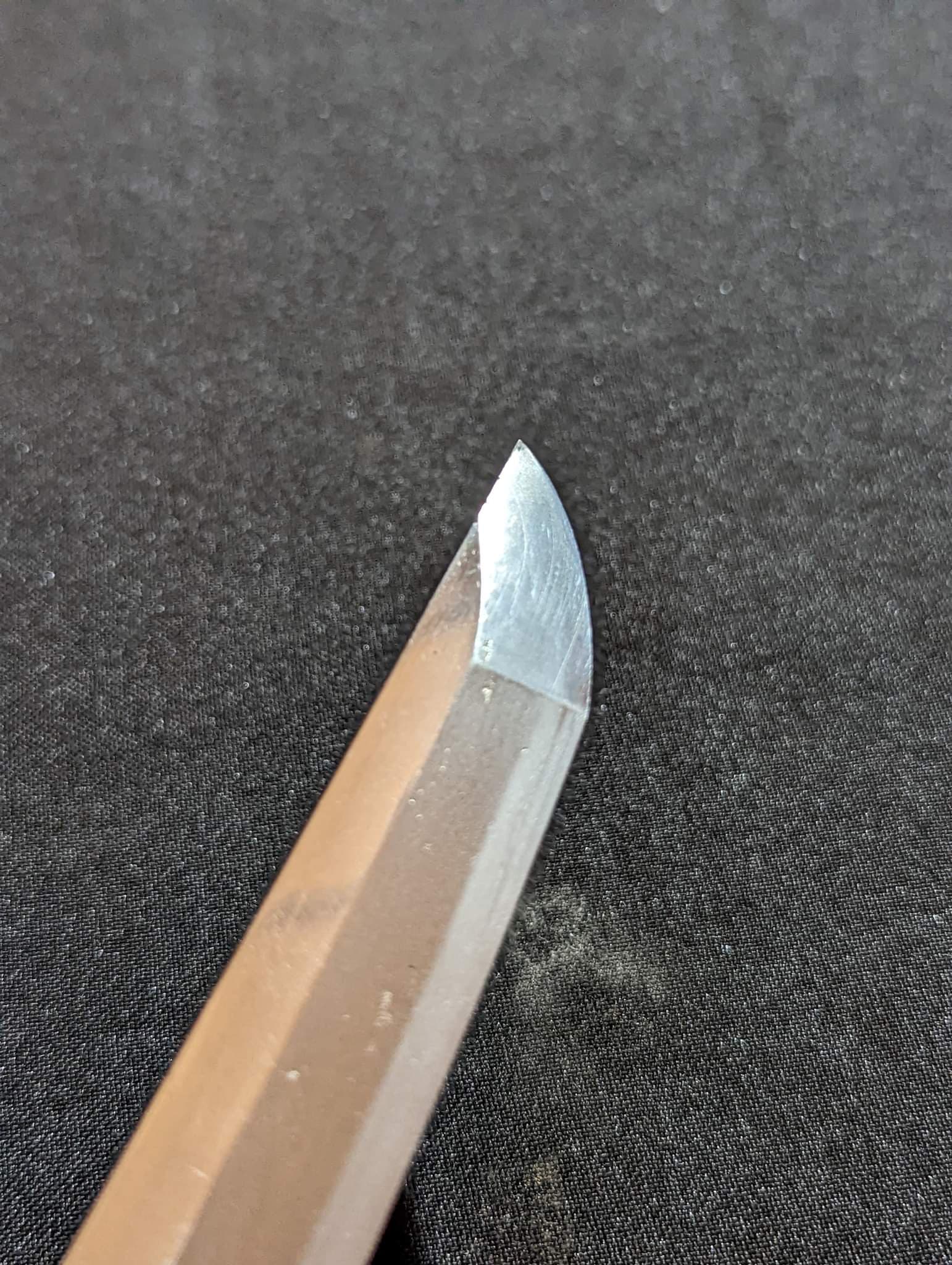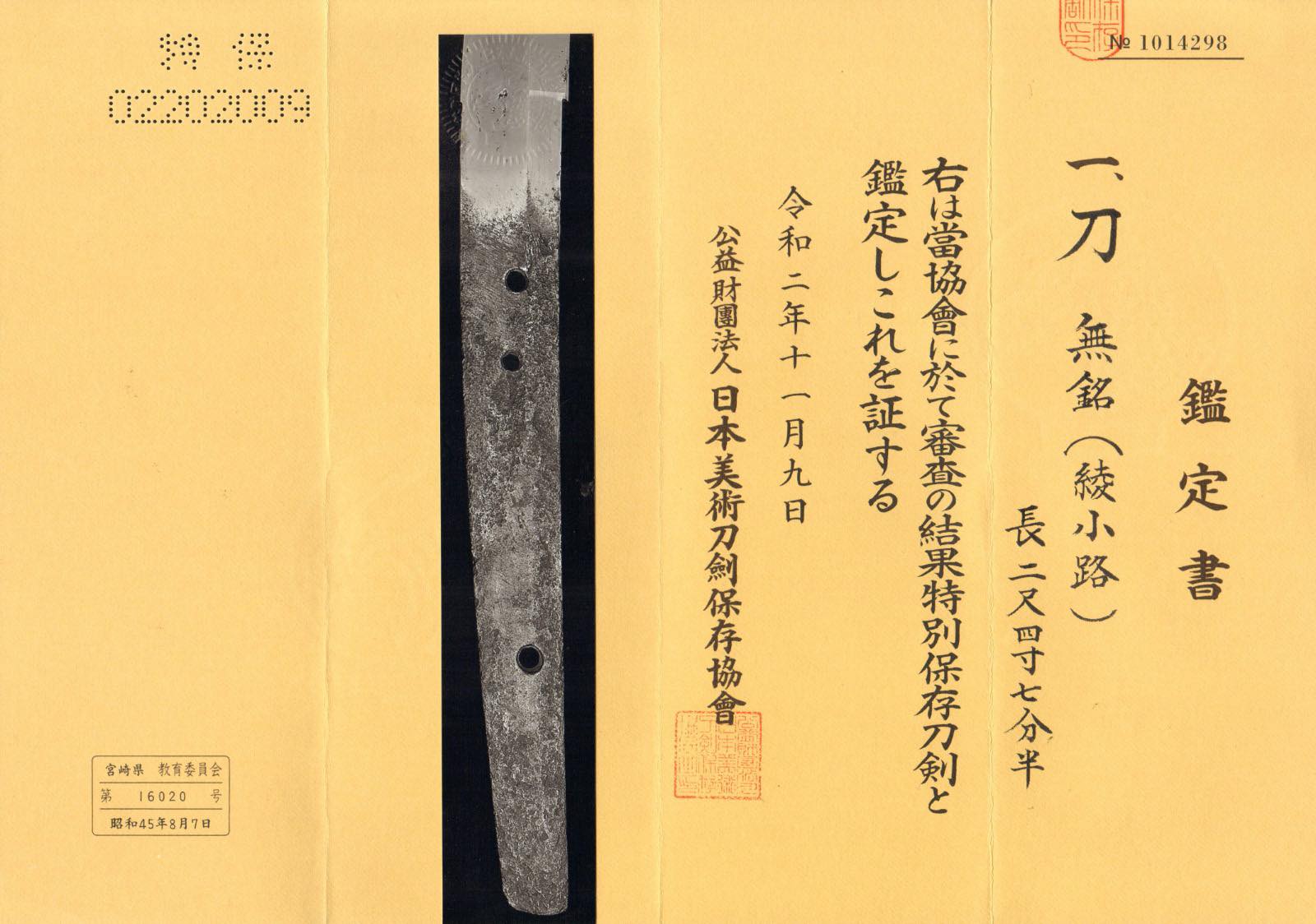Description
YAMASHIRO AYANOKOJI School
ARIKUNI HO-JI: From OSAFUNE.
JOSHU AYAKOJI JU ARIKUNI
SADATOSHI SHO-O (t: SADATOSHI): He changed his HOU, “Trailing
footsteps” TOSHI to that of his teacher (LI – benefit
from labor) in KEM-MU 1334.
SADAYOSHI KO-AN (f: SADATOSHI): Often listed in KA-REKI 1326. He
made SHINOGI-TSUKURI, IHORI-MUNE TACHI with IKUBI
KO-KISSAKI, FUNBARI SUGATA. KO-ITAME under JI-NIE.
NIE KO-MIDARE BA to KO-CHOJI, noted for serenity. KINSUJI
is found in a MIDARE BOSHI that is HAKIKAKE. The SADA is
cut large in a somewhat grass-style snaking line. The
YOSHI is small, its SHI radical, two distinct pieces –
stacked on a brick.
SADANARI(1) KO-AN (f: SADATOSHI): NISHIKIKOJI JU. Son and student
ITAME HADA. KO-MIDARE BA and KO-CHOJI KO-MIDARE BA.
SADANARI(2) KA-REKI (f: SADANARI 1): From SHO-WA to SHO-CHU 1324.
KO-MIDARE BA or KO-CHOJI KO-MIDARE.
SADANORI SHO-AN (t: SADATOSHI): YOJO AYANOKOJI JU. From SHO-AN to
SHO-CHU 1324. KO-MIDARE or KO-CHOJI KO-MIDARE.
SUYEYUKI KA-GEN (f:SUKESADA): ITAME HADA. SUGUHA with ASHI and
KO-CHOJI BA.
SADATSUGU GEN-TOKU (t: SADAIYE): From GEN-TOKU to TEI-WA 1345.
ITAME HADA. GUNOME with ASHI.
TADAYOSHI BUN-O: This could represent a confusion of events. His
dates start in KEN-CHO 1249, but other sources say he was
ABURANOKOJI TADAYOSHI of KEM-MU and father of TADAIYE.
AWATAGUCHI YOSHIMASAs’ son, TADAYOSHI was student of
AWATAGUCHI HISAKUNI. AWATAGUCHI style fine KO-MOKUME.
KO-MIDARE of KO-CHOJI BA.
TADAYOSHI
TADAIYE RYAKU-O (F: TADAYOSHI): TOGORO. AWATAGUCHI. Work appears
in EN-BUN 1356. Off to BINGO with AWATAGUCHI style.
KO-MOKUME. NOTARE-MIDARE.
ABURAKOJI TADAIYE
ABURAKOJI TADAIYE TSUKURU
_________ ________ _______
SUKEMITSU SADAYASU ARIYUKI
KA-GEN 1303 – EN-KEI 1308 –
________
SUKESADA EN-BUN 1356
To RYOKAI School

